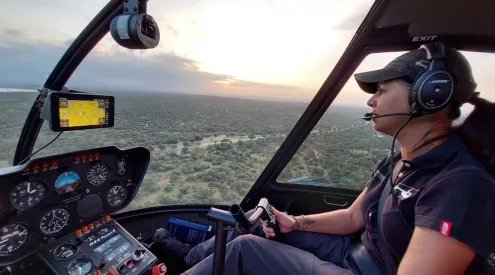A new book answers all your questions about nature’s quirks. We’ve chosen 11 great nuggets to recall on your next game drive.

By Gallo/Getty Images
1. The males of some antelope, like greater kudu, will rub their horns in mud to make them look bigger and more intimidating. This is called mud-packing.
2. Prey animals approach predators to send a clear message that the predator has been seen. Most predators rely on the element of surprise to hunt effectively, so they don’t waste their time going after prey that has seen them.
3. It’s not true that female lions do all the hunting – males are equally adept. But they are larger and less agile, and their big manes make them more conspicuous.
4. Elephants tend to use one tusk more than the other, like being left or right-handed. They also tend to use their trunks to grab and twist foliage in one direction only – an easy way of determining left or right bias.
5. Big piles of rhino dung (called middens) are very important communication mechanisms – think of them as rhino Facebook, that enables individuals to keep up to date with the social and reproductive status of others. The bigger these middens are, the more effectively the word goes out! Some middens will remain in constant use for years or even decades.
6. Except for primates, which see in colour, all mammals see in black and white and lack the ability to determine details. They see only shape and movement. So they see a vehicle and the people in it as one unit – they are totally unaware of you.
7. Aardvarks are able to dig much faster than any other mammal, including humans with picks and shovels. On average, they can dig a hole at a rate of one metre every two to three minutes.
8. Warthogs have crests of white hair on their faces designed to look like big tusks – a way of fooling predators into thinking they are well armed.
9. Bird feathers are made of the same material as rhino horn: keratin. Strictly speaking, it’s beta-keratin, which is far tougher and stronger than the alpha-keratin in hair, hooves and horns.
10. Antelope often hang out with monkeys because they are capitalising on their messy feeding habits – bounding around in the canopy, primates often dislodge fruit, flowers and leaves, and discard parts of the fruit or pods they’re eating.

11. How Fast Do Crocodiles Run?
There are lots of stories of crocodiles running down humans close to the water, but these are all gross exaggerations because the speed a crocodile can run over a flat surface is about 12-15 km/h, and the average person is able to run faster than this.

Beat about the Bush by Trevor Carnaby is a compilation of every imaginable question you might have, and his clear, uncomplicated answers to them. It’s divided into eight sections (including birds, mammals, reptiles and plants) and filled with helpful photographs and diagrams. It’s a wonderful resource to pick up and dip into.
Published by Jacana (R450).
Featured images: Gallo/Getty Images





















